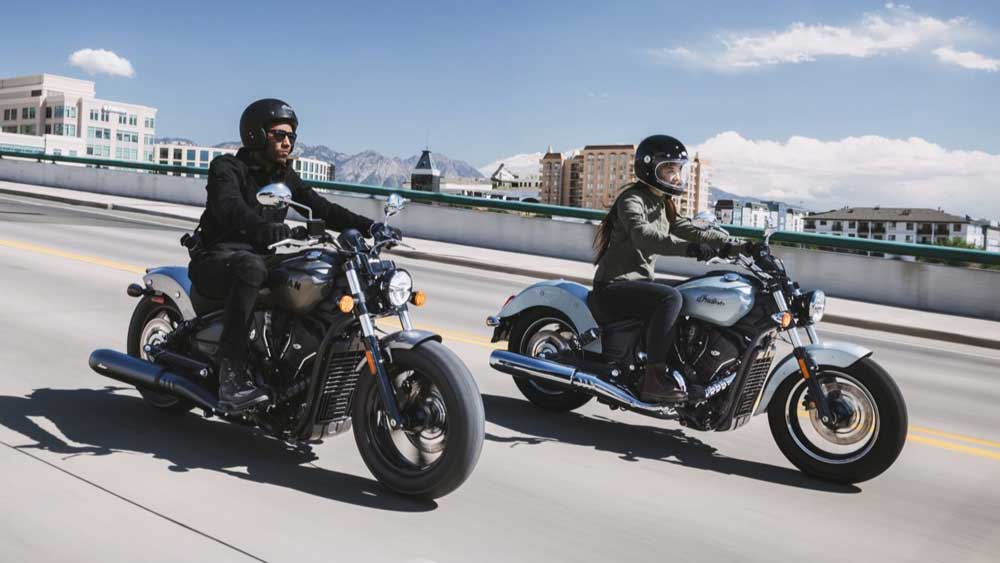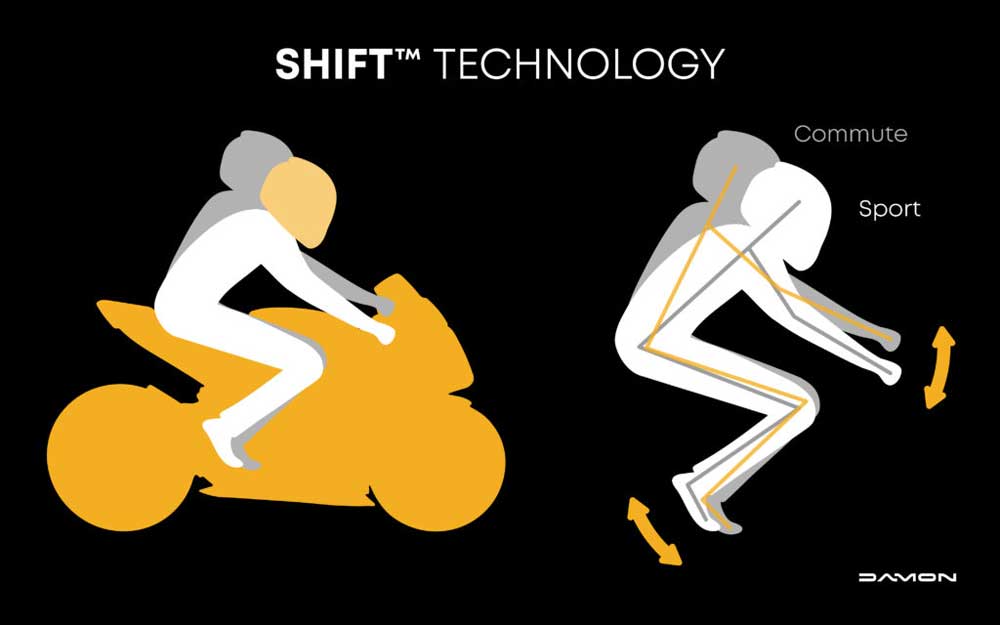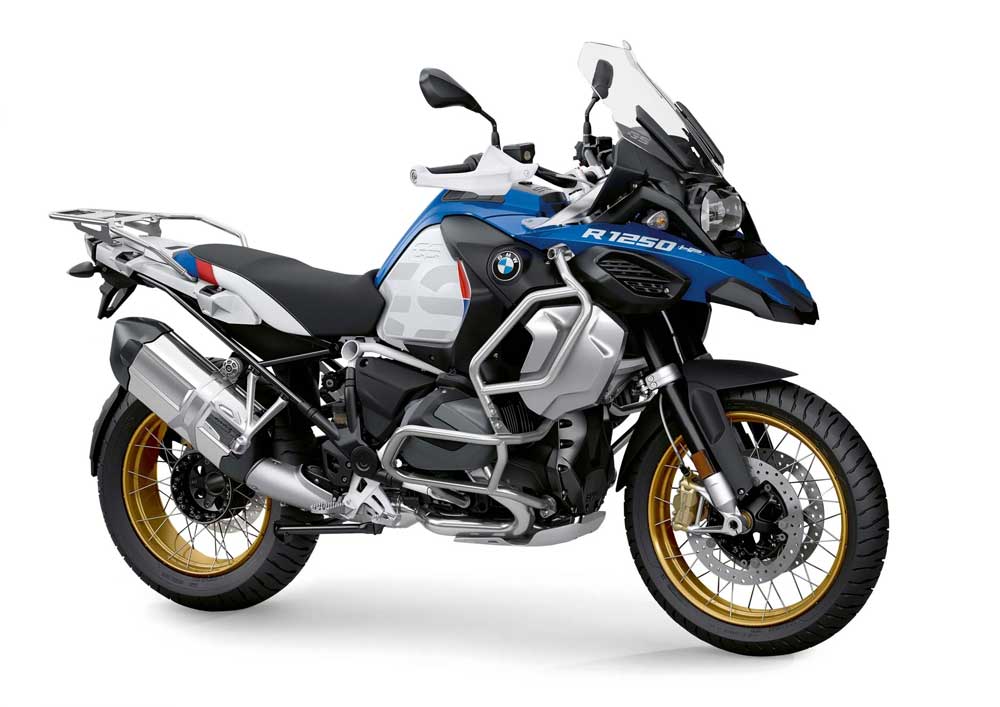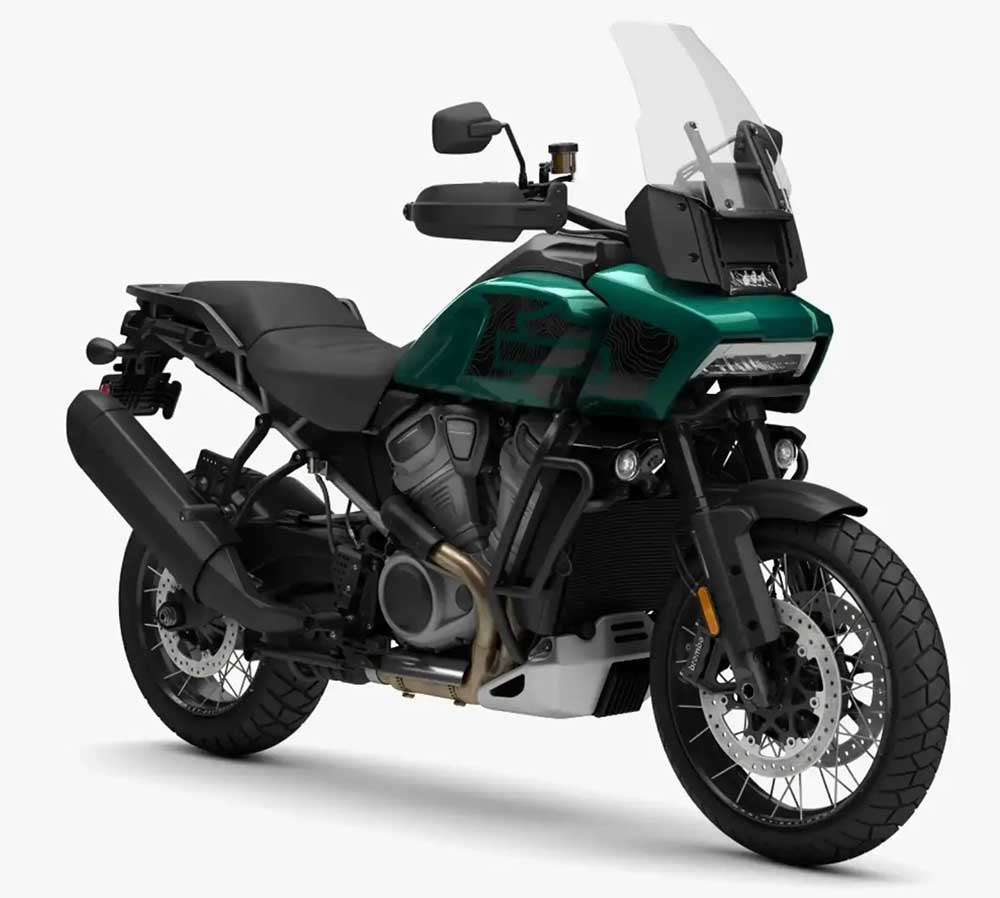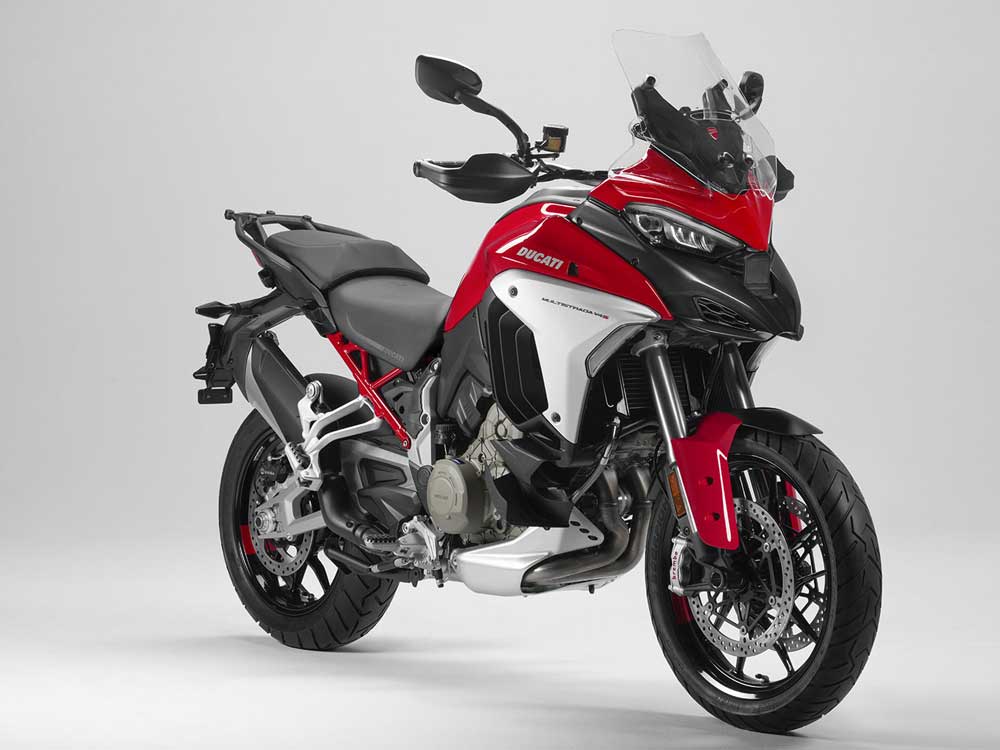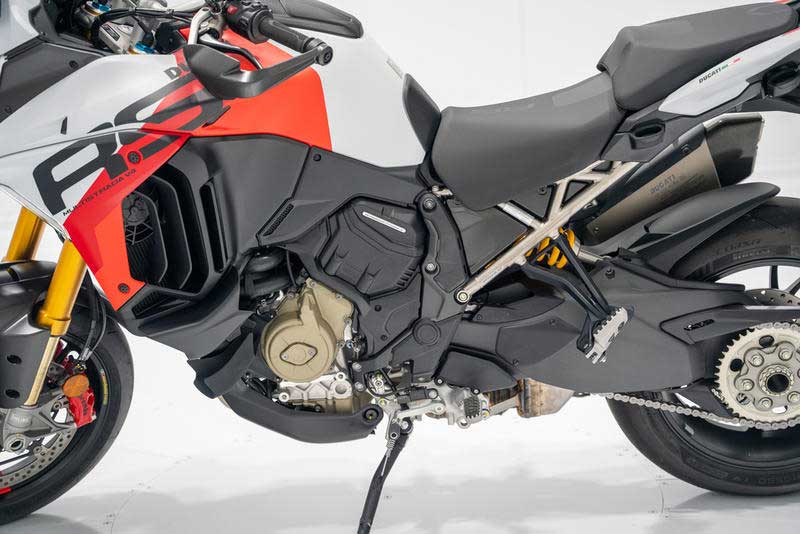Adaptive Ergonomics: The Future of Motorcycle Comfort and Performance

Motorcycling is about the thrill of the ride, but comfort and control are key to ensuring that thrill doesn’t turn into a strain. In the past, ergonomics in motorcycle design was largely about ensuring that the rider could comfortably sit and operate the bike. However, as technology advances and rider needs evolve, so too does the concept of ergonomics in motorcycle design. Enter adaptive ergonomics: a revolutionary trend that focuses on tailoring a motorcycle’s fit and comfort to each rider’s unique needs and riding style. This adaptive approach is pushing the boundaries of performance, comfort, and safety in ways that were once thought impossible.
In this blog post, we’ll explore how adaptive ergonomics is changing the game in motorcycle design. We’ll examine the key technologies behind this trend, the benefits it brings to riders, and how manufacturers are using these innovations to create more personalized and enjoyable riding experiences.
What is Adaptive Ergonomics?
Adaptive ergonomics in motorcycle design refers to the use of technology and design features that allow the motorcycle to adjust to the rider’s preferences, body size, and riding style. Rather than relying on a one-size-fits-all approach, adaptive ergonomics takes into account that every rider is different and customizes the bike’s key components—such as the seat, handlebars, foot pegs, and suspension—for a more personalized experience.
These adjustments can be automatic or manual, depending on the design and technology used. For example, some motorcycles may offer adjustable seat heights or handlebars that can move to accommodate a rider’s size. More advanced systems might even adjust the suspension settings or control positions based on the rider’s preferences or riding conditions.
The goal of adaptive ergonomics is to provide maximum comfort, control, and safety, ensuring that each rider has the best possible experience on the road or track.
Why Adaptive Ergonomics Are Gaining Popularity in Motorcycle Design
The shift towards adaptive ergonomics in motorcycle design is driven by several factors:
- Personalization and Rider Comfort: As motorcycle riders come in all shapes, sizes, and experience levels, personalization has become a key focus. With adaptive ergonomics, riders no longer need to settle for a standard setup that may not suit their body type or riding preferences. Instead, they can enjoy a more comfortable ride tailored specifically to them.
- Increased Focus on Rider Performance: Motorcycles are not just for transportation; they are also tools for performance. By improving ergonomics, manufacturers can help riders maintain better control, balance, and endurance, which is especially important in high-performance racing or long-distance touring. Adaptive ergonomics can enhance a rider’s riding posture, reduce fatigue, and ensure more precise control over the bike.
- Technological Advancements: Advances in technology are enabling manufacturers to create systems that can automatically adjust a motorcycle’s components to suit individual riders. These technologies have become more affordable, making them more accessible to the mass market.
- Safety Considerations: Proper ergonomics can reduce strain on the rider’s body, which improves overall safety by preventing fatigue-related accidents. By ensuring that riders can maintain an optimal riding posture, adaptive ergonomics contribute to safer riding, especially over long distances or during challenging conditions.
Benefits of Adaptive Ergonomics for Riders
Adaptive ergonomics provide several key benefits that improve the riding experience, particularly in terms of comfort, performance, and safety:
- Enhanced Comfort: The ability to adjust the motorcycle’s key components to fit the rider’s body type and preferences leads to better comfort, especially for long rides. Adjustments to the seat, handlebars, and foot pegs can prevent discomfort, reduce pressure points, and minimize muscle strain.
- Improved Control and Handling: By allowing the rider to adjust the position of their body relative to the bike, adaptive ergonomics can help improve balance and control. Riders can maintain a more natural and effective posture, which allows for quicker reactions and better handling in different riding conditions.
- Reduced Fatigue: When the ergonomics of a bike are properly suited to the rider, fatigue is significantly reduced. Riders can spend more time on the bike without experiencing discomfort or strain, leading to longer rides with less physical stress. This is particularly valuable for long-distance touring and endurance racing.
- Customizable Riding Experience: Adaptive ergonomics can cater to the individual needs of riders, providing them with a more tailored experience. Riders can fine-tune their bike to suit their specific requirements, whether that means adjusting the suspension for performance riding or modifying the seat height for comfort.
- Better Safety: Proper ergonomic adjustments can help riders maintain the best possible posture, reducing the risk of injury from improper riding positions. Additionally, being more comfortable and in control improves a rider’s reaction times and situational awareness, leading to safer riding overall.
Key Technologies Driving Adaptive Ergonomics
Several innovative technologies are making adaptive ergonomics a reality in motorcycle design:
- Electronic Suspension Adjustment: Many modern motorcycles come equipped with electronically adjustable suspension systems that adapt to the rider’s weight, riding style, and terrain conditions. These systems automatically adjust the damping force to optimize comfort, handling, and stability, improving the overall riding experience.
- Adjustable Foot Pegs and Handlebars: Some motorcycles feature adjustable foot pegs and handlebars that allow riders to customize the position of these components to match their comfort preferences. These manual or electric adjustments help riders find the perfect position for better control and comfort.
- Heated and Cooling Seats: For added comfort, some modern motorcycles feature seats with heating and cooling capabilities. This is particularly useful for riders in extreme climates, as it helps maintain comfort during long rides.
- Smart Technology Integration: With the rise of smart helmets and other wearable technology, adaptive ergonomics is also being integrated into the rider’s gear. For example, sensors in helmets and jackets can provide feedback to the bike’s onboard computer to adjust the bike’s settings based on the rider’s posture, body temperature, or riding style.
- Smart Handlebar Systems: Some motorcycles are incorporating smart handlebars that can adjust their position with the push of a button. These handlebars can be moved to accommodate different rider preferences, making it easier for riders to switch between different riding styles or adjust for comfort during long rides.
Case Studies: Leading Innovations in Adaptive Ergonomics
BMW R1250 GS:
The BMW R1250 GS adventure bike features adaptive ergonomics that allow riders to adjust the height of the seat and handlebars for a more customized fit. The electronically adjustable suspension system automatically adapts to the rider’s weight and riding conditions, ensuring optimal comfort and performance. These features make the R1250 GS a popular choice for long-distance touring riders who demand both comfort and versatility.
Harley-Davidson Pan America 1250:
Harley-Davidson’s Pan America 1250 features advanced suspension systems that can be electronically adjusted to suit different riding conditions. The bike also offers adjustable ergonomics, including seat height and handlebar positioning, making it suitable for riders of various sizes. With its combination of technology and comfort, the Pan America 1250 is a great example of adaptive ergonomics in action for touring and adventure motorcycling.
Ducati Multistrada V4:
The Ducati Multistrada V4 is equipped with Ducati’s Skyhook suspension system, which automatically adjusts to the rider’s weight and the road conditions. The bike’s ergonomics are also customizable, with an adjustable seat and handlebars that can be modified to fit different rider profiles. This flexibility ensures that the Multistrada V4 offers both performance and comfort, whether for off-road adventures or long-distance touring.
Challenges and Considerations in Adaptive Ergonomics Design
While adaptive ergonomics offer a range of benefits, there are some challenges and considerations in their implementation:
- Cost: The inclusion of adaptive features like electronic suspension systems, adjustable foot pegs, and smart technology can increase the cost of manufacturing and purchasing a motorcycle. However, as technology becomes more widespread, costs are likely to decrease over time.
- Complexity: Designing motorcycles with adaptive ergonomics can be complex, as manufacturers must ensure that the technology is reliable, user-friendly, and compatible with the overall motorcycle design. There is also the challenge of making adjustments easy to use while riding.
- Weight: The addition of electronic systems and adjustable components can increase the overall weight of the motorcycle, which may reduce some of the benefits of lightweight performance. Manufacturers need to strike a balance between comfort and performance.
- Durability: The more advanced the technology, the more vulnerable it may be to wear and tear. Designers must ensure that the adaptive components are durable and able to withstand the stresses of regular use, including exposure to the elements.
How You Can Apply Adaptive Ergonomics in Your Work
As a designer or engineer in the motorcycle industry, here are some ways you can apply adaptive ergonomics principles to your designs:
- Integrate Customizable Components: Focus on creating ergonomic features like adjustable seats, handlebars, and foot pegs that allow riders to personalize their bikes for comfort and control. These features can be both manual and electronic, depending on the intended market.
- Embrace Smart Technologies: Explore the integration of smart technologies like sensors and feedback systems that can dynamically adjust the motorcycle’s settings based on the rider’s posture, weight, and riding conditions. This will enhance both performance and comfort.
- Prioritize User Experience: Design interfaces that allow riders to make ergonomic adjustments quickly and easily, even while riding. This could involve creating intuitive controls or automatic adjustment systems that don’t require the rider to stop.
- Focus on Lightweight, Durable Materials: Ensure that any added features for comfort and performance don’t add unnecessary weight or compromise durability. Lightweight materials like carbon fiber or advanced composites can help maintain performance without sacrificing comfort.
Conclusion
Adaptive ergonomics are transforming the way motorcycles are designed, offering a more personalized, comfortable, and safer experience for riders. By integrating technology that allows for real-time adjustments to key components, manufacturers are catering to the diverse needs of modern riders. Whether it’s enhancing long-distance touring comfort or providing better control and performance for racing, adaptive ergonomics is a key trend that will continue to shape the future of motorcycle design.
As the motorcycle industry embraces these innovations, designers and engineers have the opportunity to create bikes that offer the perfect balance of performance, comfort, and safety, making each ride a more enjoyable and personalized experience.
References
BMW, 2022. R1250 GS: Advanced Ergonomics for the Modern Rider. Available at: www.bmw.com [Accessed 2 March 2025].
Harley-Davidson, 2023. Pan America 1250: A New Standard in Adaptive Ergonomics. Available at: www.harley-davidson.com [Accessed 2 March 2025].
Ducati, 2022. Multistrada V4: The Perfect Fusion of Comfort and Performance. Available at: www.ducati.com [Accessed 2 March 2025].

Introduction Modern vehicle design is no longer just about performance and aesthetics—it’s also about enhancing the overall well-being of drivers…
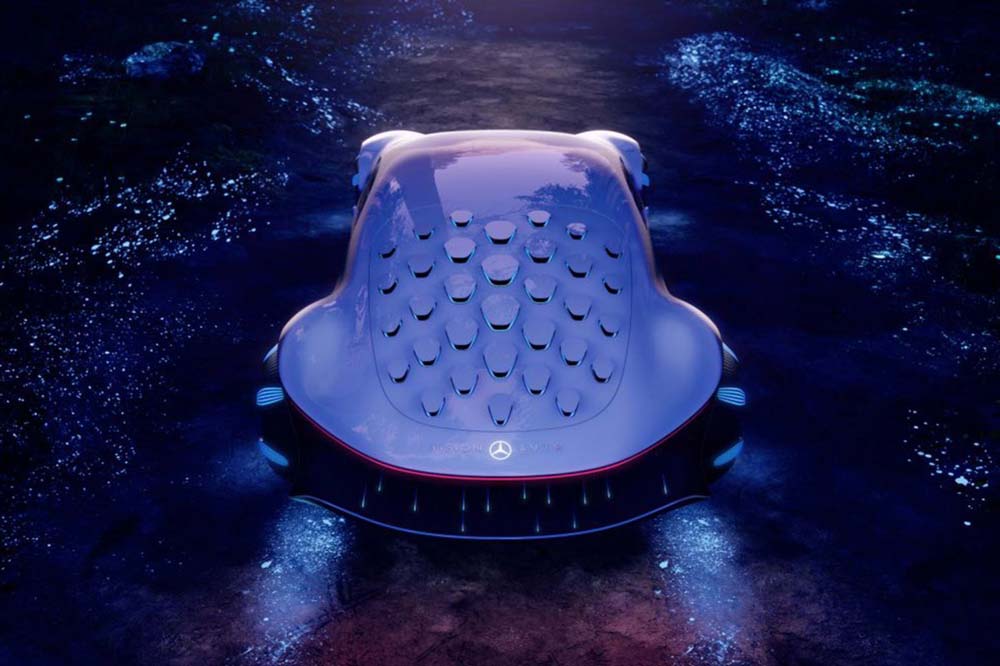
Introduction: The Growing Influence of Bio-Inspired Design As the automotive industry moves towards more sustainable, efficient, and innovative designs, bio-inspired…

